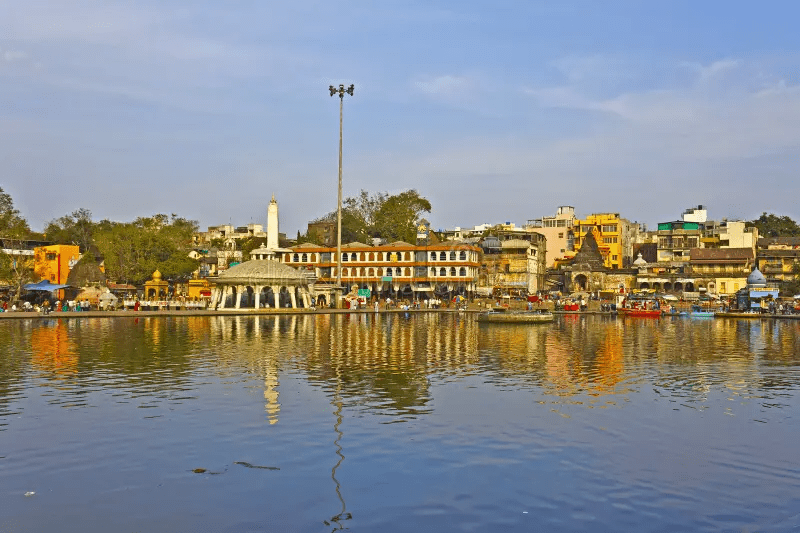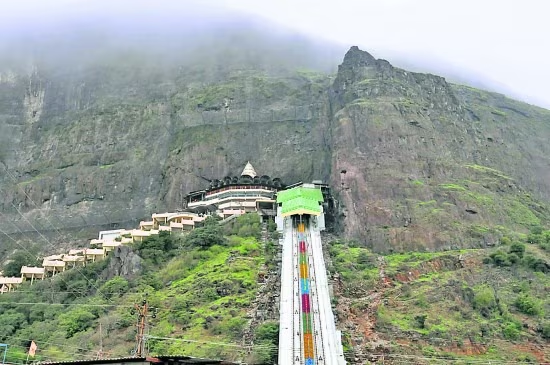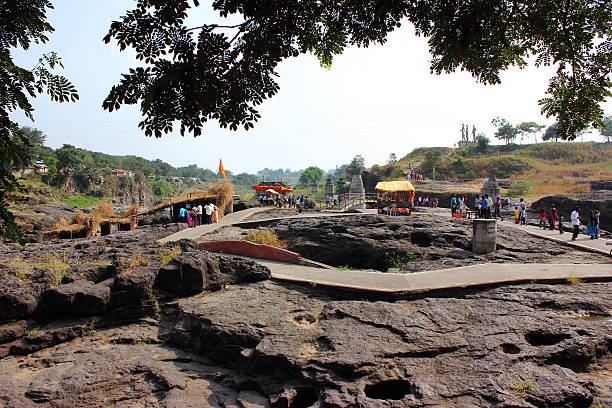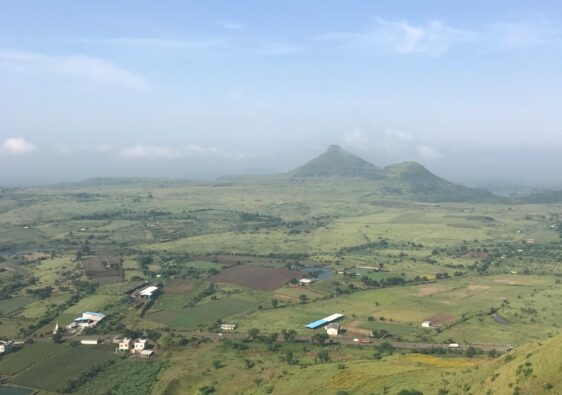Ramayana’s Journey Through Nashik: Unraveling the Epic Story of Ramayana in the City of Divine Legacy
Nashik, a city nestled in the heart of the Western Ghats, is a land where history, spirituality, and mythology converge. Among its many tales, the story of Ramayana stands out, deeply intertwined with the very soul of the city. The story of Ramayana, one of the greatest epics in Indian culture, is not just a narrative but a living legend in Nashik. As you traverse through its sacred sites, you walk in the footsteps of Lord Rama, Sita, and Lakshmana, who graced this land during their 14-year exile.
The Divine Exile: Understanding the Story of Ramayana in Nashik
The story of Ramayana unfolds with the exile of Lord Rama, Sita, and Lakshmana, a pivotal chapter that led them to Nashik. This city, known for its spiritual aura, played host to several key events in the Ramayana, making it a sacred space for devotees and scholars alike.
Nashik’s connection to the Ramayana is so profound that the city itself is often seen as a stage where the divine drama of the Ramayana was enacted. Let’s delve deeper into the landmarks that hold the essence of this epic tale.
1. Panchavati: The Sacred Abode in the Story of Ramayana

Panchavati, a serene and sacred region in Nashik, is perhaps the most significant location in the city when it comes to the story of Ramayana. It is believed that Lord Rama chose this site for his residence during the exile, drawn by its tranquil environment and the dense forest that provided both refuge and solace.
The Significance of Panchavati:
- Lord Rama’s Hermitage: Panchavati was where Lord Rama, Sita, and Lakshmana built their humble abode during their stay. This simple hermitage, surrounded by lush greenery and the tranquil Godavari River, became a place of meditation and peace.
- The Five Banyan Trees: The name Panchavati comes from the five (pancha) banyan trees (vatika) that are believed to have stood here during that time. These trees were not only a part of the natural landscape but also served as silent witnesses to the unfolding of divine events.
Key Sites in Panchavati:
- Sita Gufa: A narrow cave, Sita Gufa is believed to be the spot where Sita, in her innocence, was abducted by Ravana. The cave’s entrance is small, leading to a dark interior that echoes with the whispers of the past. According to the story of Ramayana, it was here that Sita was lured by the golden deer and subsequently taken by Ravana while Lord Rama and Lakshmana were away.
- Kalaram Temple: Though built centuries later, the Kalaram Temple is intricately linked to the story of Ramayana. It is said to be located on the very site where Lord Rama once resided. The temple, with its black stone idol of Lord Rama, reflects the deep reverence the people of Nashik have for this divine tale.
2. The Godavari River: A Sacred Witness to the Story of Ramayana

The Godavari River, often hailed as the Ganga of the South flows with a quiet dignity through Nashik. In the story of Ramayana, this river plays a vital role, being the site where several significant events took place.
The Divine Connection:
- Rituals and Prayers: The Godavari’s banks were where Lord Rama performed the last rites for his father, King Dasharatha. This act of filial duty is one of the most poignant moments in the Ramayana, showcasing Rama’s deep sense of duty and devotion.
- Purification and Redemption: The river is also associated with spiritual purification. Bathing in the Godavari, especially at the sacred Ramkund, is believed to cleanse one’s sins, a belief that stems from its connection to the story of Ramayana.
Key Sites Along the Godavari:
- Ramkund: This rectangular stone tank is where Lord Rama is said to have taken a dip. Even today, Ramkund is considered one of the holiest spots in Nashik. Devotees believe that immersing the ashes of the deceased here grants them moksha (salvation), a belief rooted in the river’s association with the Ramayana.
- Kapaleshwar Temple: This ancient Shiva temple near Ramkund adds another layer to the city’s spiritual landscape. According to legends, it was visited by Lord Rama, making it an integral part of the Ramayana’s narrative in Nashik.
3. Saptashrungi: The Divine Protector in the Story of Ramayana

Saptashrungi, a range of seven hills located about 60 kilometers from Nashik, is not just a natural wonder but a site of immense spiritual significance. It is said that during their exile, Lord Rama, Sita, and Lakshmana visited this site, and it was here that they sought the blessings of Goddess Saptashrungi Nivasini.
The Role of Saptashrungi in the Ramayana:
- Divine Intervention: The story of Ramayana narrates that it was here that Lord Rama was blessed with divine weapons by the Goddess to fight Ravana. This divine intervention was crucial for the battle that was to follow, marking Saptashrungi as a place of power and protection.
- The Goddess’s Abode: The temple dedicated to Goddess Saptashrungi Nivasini is perched atop a cliff, accessible via a steep climb. Pilgrims believe that the Goddess still protects the devotees, just as she protected Lord Rama in the story of Ramayana.

Key Experiences at Saptashrungi:
- The Climb to the Temple: The ascent to the temple involves climbing 510 steps, a journey that is both physically and spiritually enriching. As you climb, you can almost feel the ancient energies that have permeated this place for millennia.
- Panoramic Views: Once at the top, the view of the surrounding valleys is breathtaking. It’s easy to imagine why Lord Rama chose this site for divine blessings—its serenity and beauty are unparalleled.
4. Tapovan: A Forest of Meditation in the Story of Ramayana

Tapovan, which literally means “forest of meditation,” is another significant location in Nashik’s connection to the story of Ramayana. It is in this dense forest that one of the most dramatic incidents in the Ramayana took place—the disfigurement of Surpanakha, Ravana’s sister.
The Incident:
- Surpanakha’s Encounter: According to the story of Ramayana, Surpanakha, enchanted by Lord Rama’s beauty, approached him with amorous intentions. When rebuffed, she attacked Sita in jealousy. In response, Lakshmana cut off her nose and ears, a moment that set off a chain of events leading to the eventual battle with Ravana.
- Lakshmana’s Temple: The site where this incident occurred is now marked by a small temple dedicated to Lakshmana. This temple is a reminder of the momentous events that transpired here, forever changing the course of the Ramayana.
Key Sites in Tapovan:
- Lakshmana Temple: A visit to this temple allows one to connect with the deeper layers of the Ramayana’s narrative. The temple, though modest, holds great significance, as it is believed to be the very spot where Lakshmana defended his brother and sister-in-law.
- The Serenity of Tapovan: The forest itself, though now more urbanized, still retains an aura of calm and meditation. It’s a place where one can reflect on the moral and spiritual lessons imparted by the story of Ramayana.
A Journey Beyond Time: Experiencing the Story of Ramayana in Nashik
To walk through Nashik is to journey through the pages of the story of Ramayana. Each site, from Panchavati to Saptashrungi, echoes the tales of valor, devotion, and divine intervention that have been passed down through generations.
Nashik is not just a city; it is a living museum where the story of Ramayana unfolds before your eyes. For pilgrims, historians, and curious travelers alike, Nashik offers a unique opportunity to connect with one of India’s greatest epics on a deeply personal level.
Whether you are seeking spiritual enlightenment or simply wish to explore the rich tapestry of India’s cultural heritage, Nashik is a destination that promises to leave an indelible mark on your soul. Here, the story of Ramayana is not just told—it is lived, one sacred step at a time.
Practical Tips for the Ramayana Trail in Nashik:
- Best Time to Visit: October to March is ideal, as the weather is cool and pleasant, allowing you to explore comfortably.
- Local Cuisine: Don’t miss out on trying the local favorites like Misal Pav and the traditional Maharashtrian thali, which are as rich in flavor as the city’s history.
- Accommodation: Nashik offers a range of accommodations, from budget-friendly lodges near Panchavati to luxury resorts that provide a more comfortable stay.
- Travel Tip: Hiring a local guide is recommended. They can provide insightful stories and context, making your journey through the story of Ramayana in Nashik even more enriching.
Nashik, with its deep-rooted connection to the story of Ramayana, invites you to explore not just its physical landscape but also the spiritual and mythical layers that make it a city of timeless tales.




